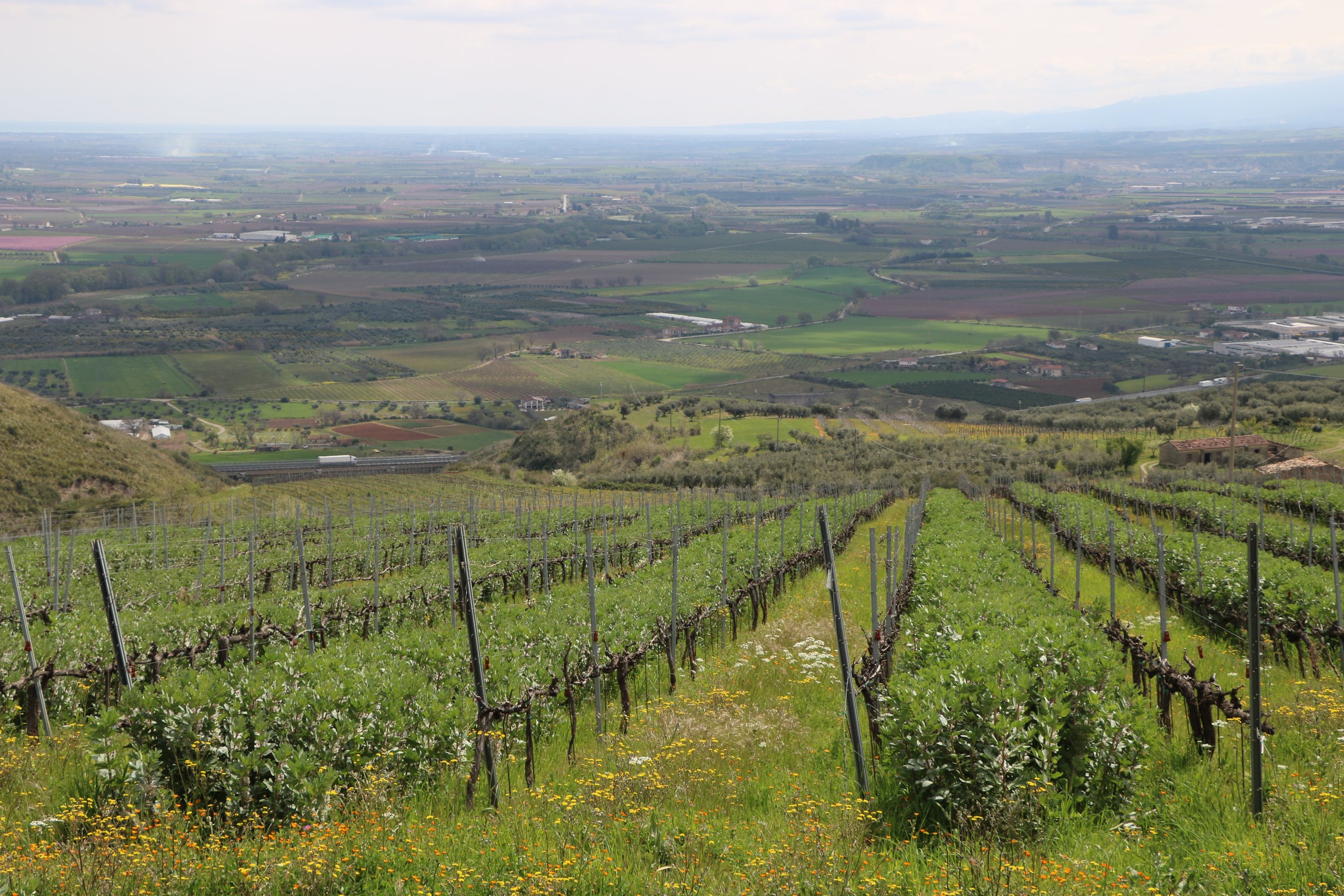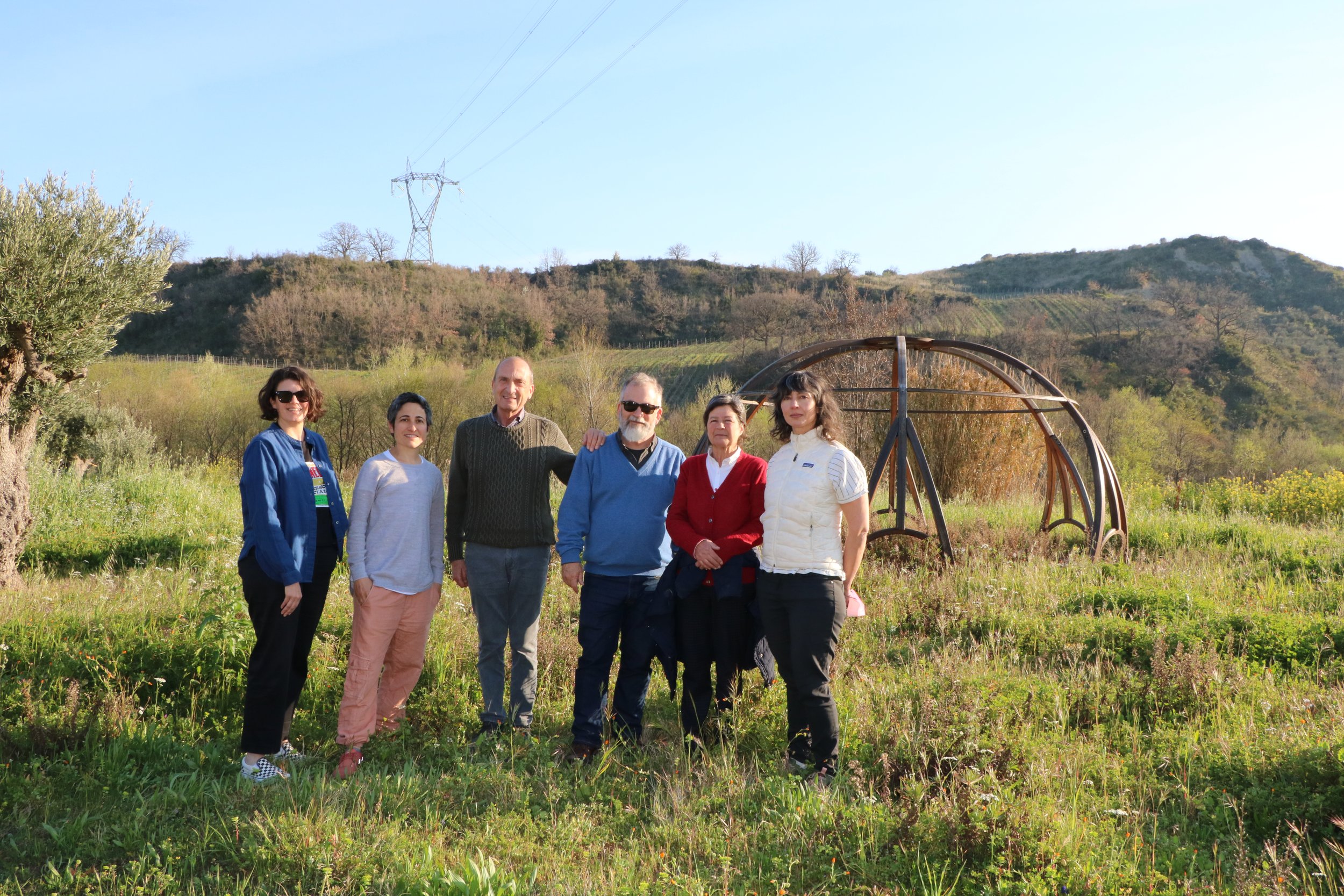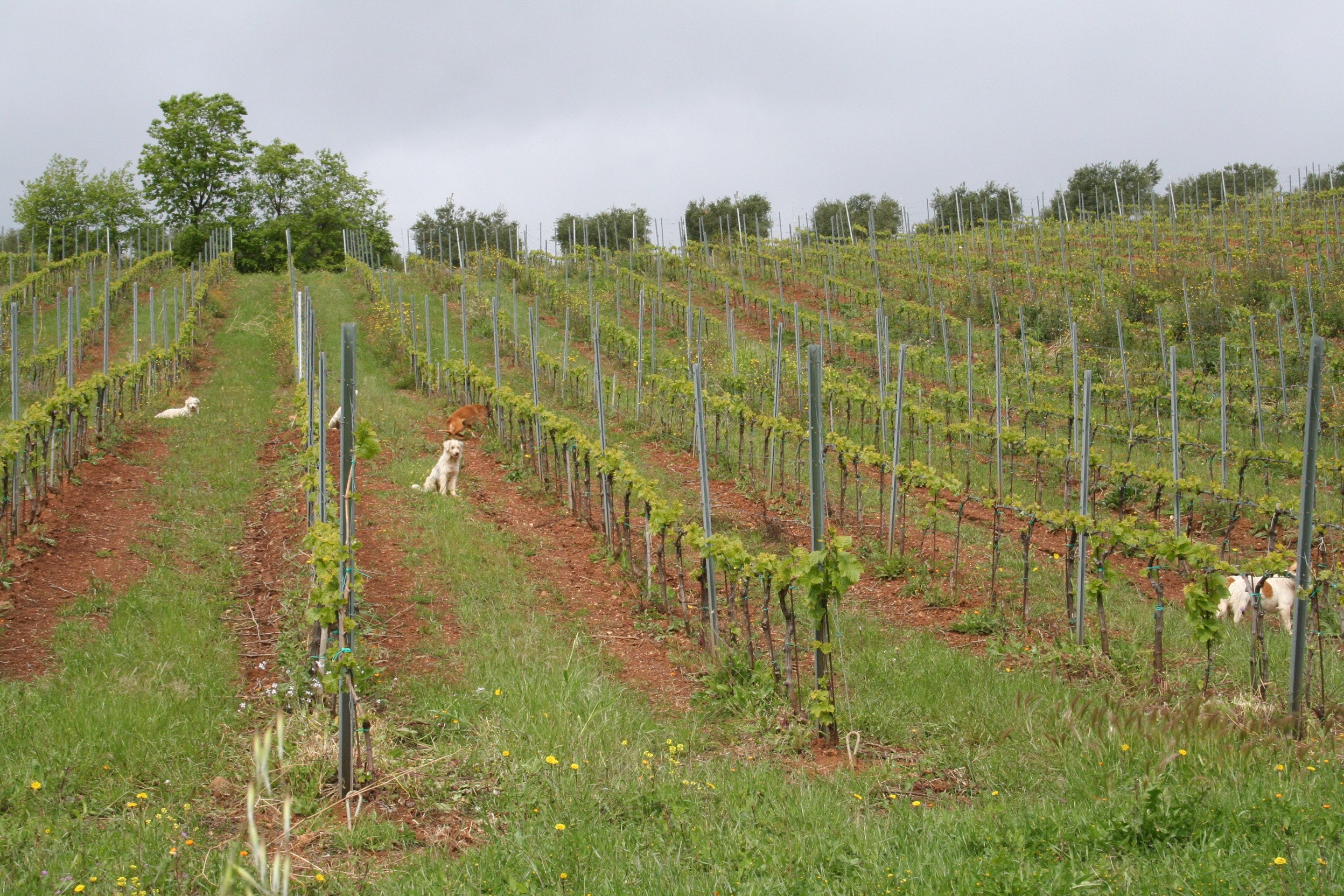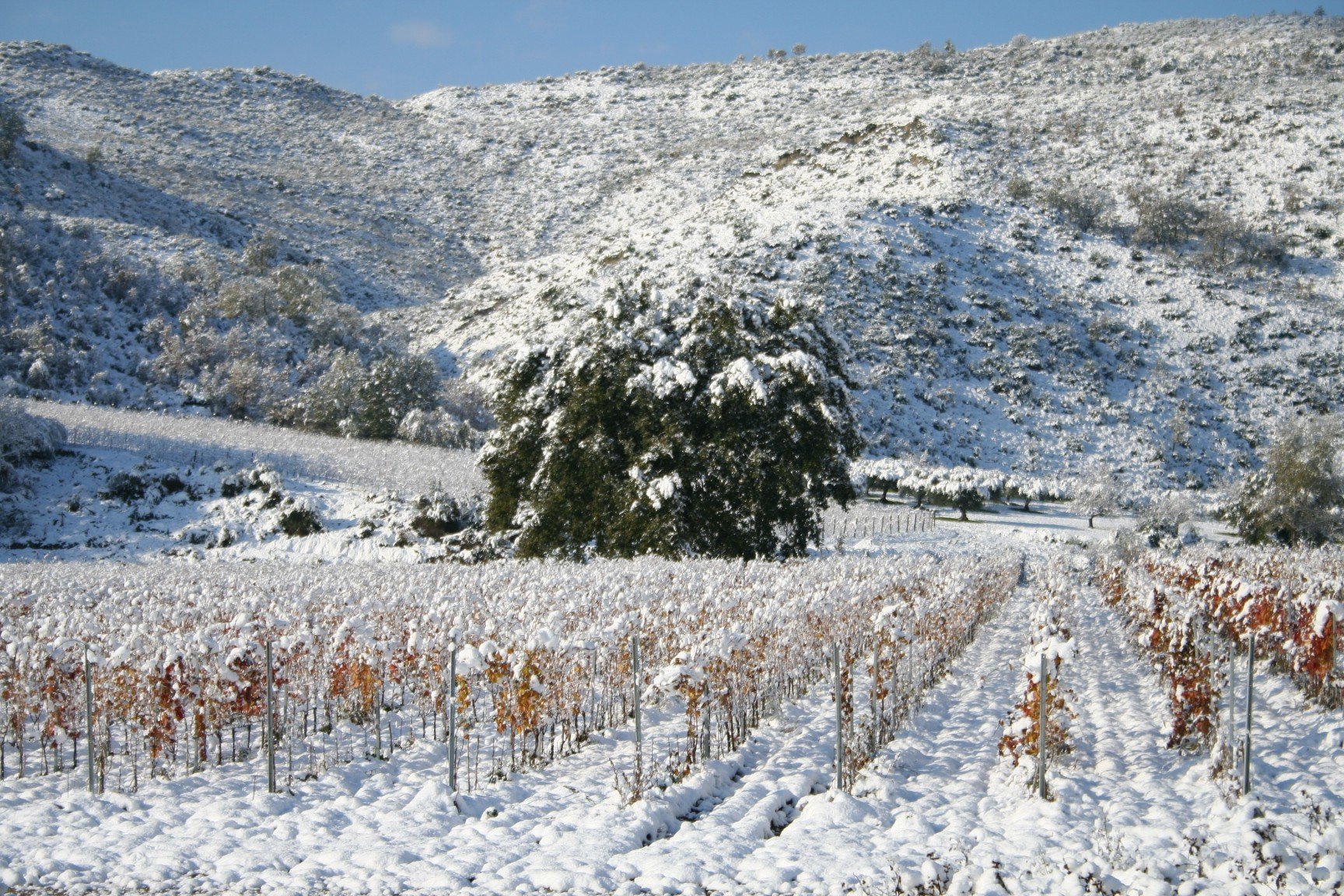Masseria Falvo
about masseria falvo:
Masseria Falvo is a historical property near Saracena in Calabria, in the far south of Italy. The property has been in the same family since 1727; the vineyards, planted in limestone-based soil, were destroyed by Phylloxera in the 1950s, and replanted by the two Falvo brothers in the early 2000s. They grow various indigenous grape varieties, including Magliocco and Guarnaccia, and vinify them in a clean, transparent style that allows their character to shine.
_____________________________________________
the wines:
Guarnaccia Bianca ‘Donna Filomena’, Terre di Cosenza DOC
Vineyards planted in about 2000, from a massal selection of Guarnaccia, a local white wine variety, at 250-350 meters (about 800-1,150 feet) above sea level. The vines are sustainably farmed, using only copper sulfate and sulfur to combat vine diseases. Fermentation takes place in stainless steel tanks at cool temperatures, using selected yeast; then the wine is aged in the same tanks for about ten months before being bottled.
In the glass, the wine shows aromas and flavors of green apple, mixed herbs, lemon peel, custard, white flowers and many other things. Slightly chewy on the palate, fresh acidity, very long, very good to excellent quality. Some of the most interesting white wines in Italy are being made in the far south, and this is one of them. This might age, but it’s so good now that I’m not going to bother keeping it; drink it with all sorts of foods, grilled fish, roast chicken, pesto pizza…
Magliocco ‘Cires’, Terre di Cosenza DOC
Vineyards planted in about 2000, from a massal selection of Magliocco, a local red grape variety, at an elevation of 400-500 meters (about 1,300-1,650 feet) above sea level. Sustainably farmed, using only copper sulfate and sulfur to combat vine diseases. Winemaking is straightforward, the wine is fermented at cool temperatures in stainless steel using selected yeasts, with about 10-12 days of maceration on the skins, then aged in the same tanks for about ten months before being bottled.
Ian d’Agata puts it perfectly: ’A very good Magliocco wine will have surprisingly smooth tannins and sweet black cherry, exotic fruit, with notes of tobacco (aromas can be very floral, even pungent, in young wines but soften over time) and underbrush on the finish, with just a hint of herbs.’ This description is a general one, but it fits this wine well. Very complex and interesting wine, with quite chewy tannins but not bitter, drink it with red meats or cheese. Reminds me a bit of Mourvèdre, in a good way. Quite drinkable on release, but should age for at least ten years.
Passito ‘Milirosu’
A dessert wine made by an unusual local method from 85% Moscato di Saracena, the remainder being a mixture of Guarnaccia and Malvasia. (Saracena is a local town; ‘Moscato di Saracena’ is the wine type, not the name of the variety, which is Moscato Bianco.)The vineyards were planted in about 2000, at about 250-450 meters (800-1,500 feet) above sea level.
To quote Ermanno Falvo, ‘The vinification of Moscato di Saracena follows a traditional method, at least eight centuries old. In the little town of Saracena, almost every family makes their own Moscato. The wine consists of about three-quarters Moscato Bianco grapes, with the remainder being Guarnaccia and a local type of Malvasia. Each family uses different grapes in the proportion that they have in their own vineyards, but they all make the wine in about the same way.
The Moscato grapes are air-dried on the plant, if the humidity is low that year, or laid out on canes to dry if not. The Guarnaccia and Malvasia grapes are harvested at full ripeness and pressed gently to express the must, which is then boiled until reduced by about a third. Meanwhile, the partially dried Muscat grape berries are selected by hand and pressed to obtain their must; the two musts are combined, and the fermentation (using indigenous yeasts) is carried out at a controlled temperature. This may take several months. When the residual sweetness has declined to the right point, the fermentation is stopped, and the wine is racked off into stainless steel tanks, where it spends almost a year on the fine lees.’
In the glass, this irresistible dessert wine shows aromas and flavors of toffee, roasted nuts, butter (I’m not making this up), and perhaps dried fig; it’s sweet but balanced, not cloying. Serve with cookies for an easy dessert, or with nuts and aged cheese. Due to the way, it is made it keeps for quite some time in the ‘fridge, although that would of course depend on your restraint.
The finished residual sweetness is about 70 grams per liter.
_____________________________________________
more information:
Visit Masseria Falvo’s website





